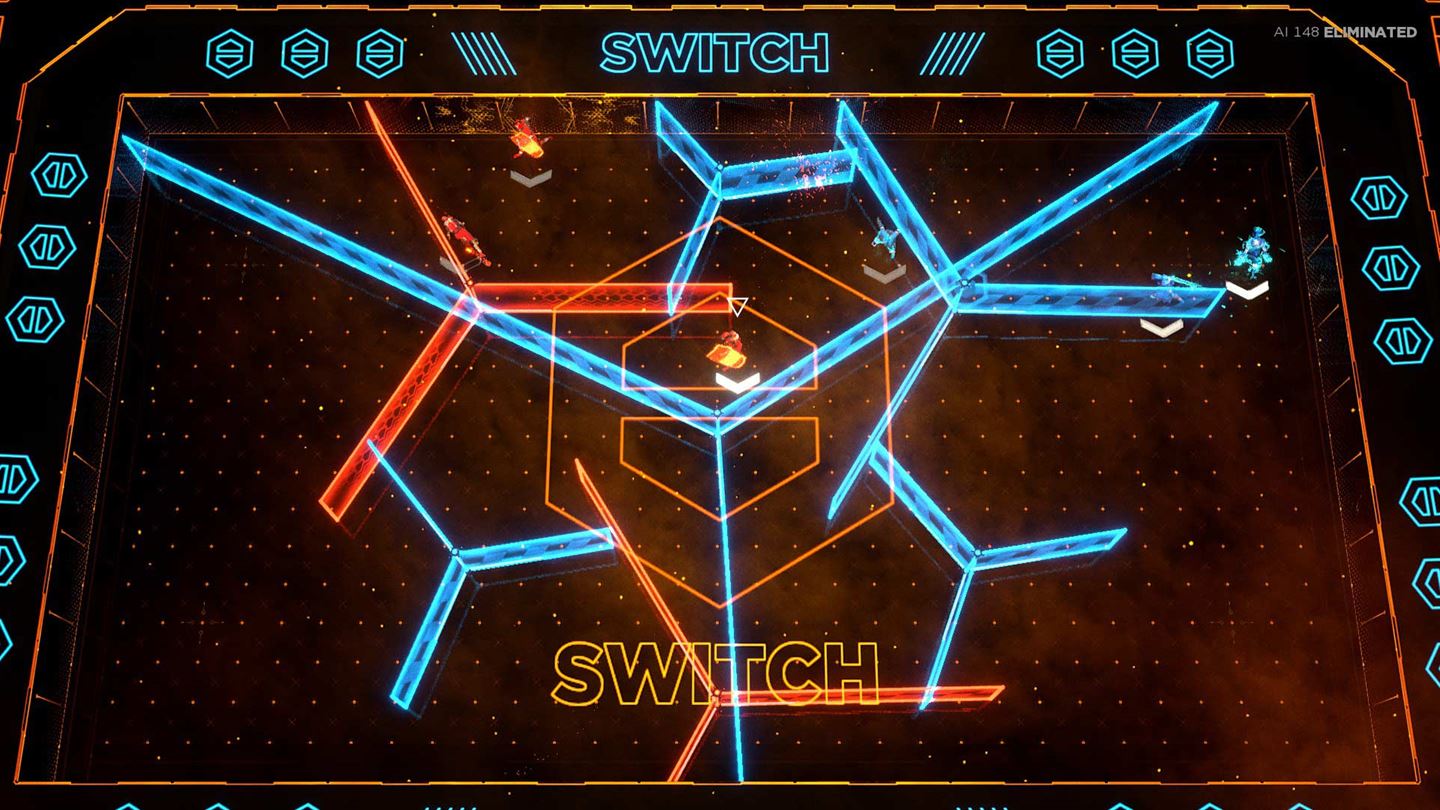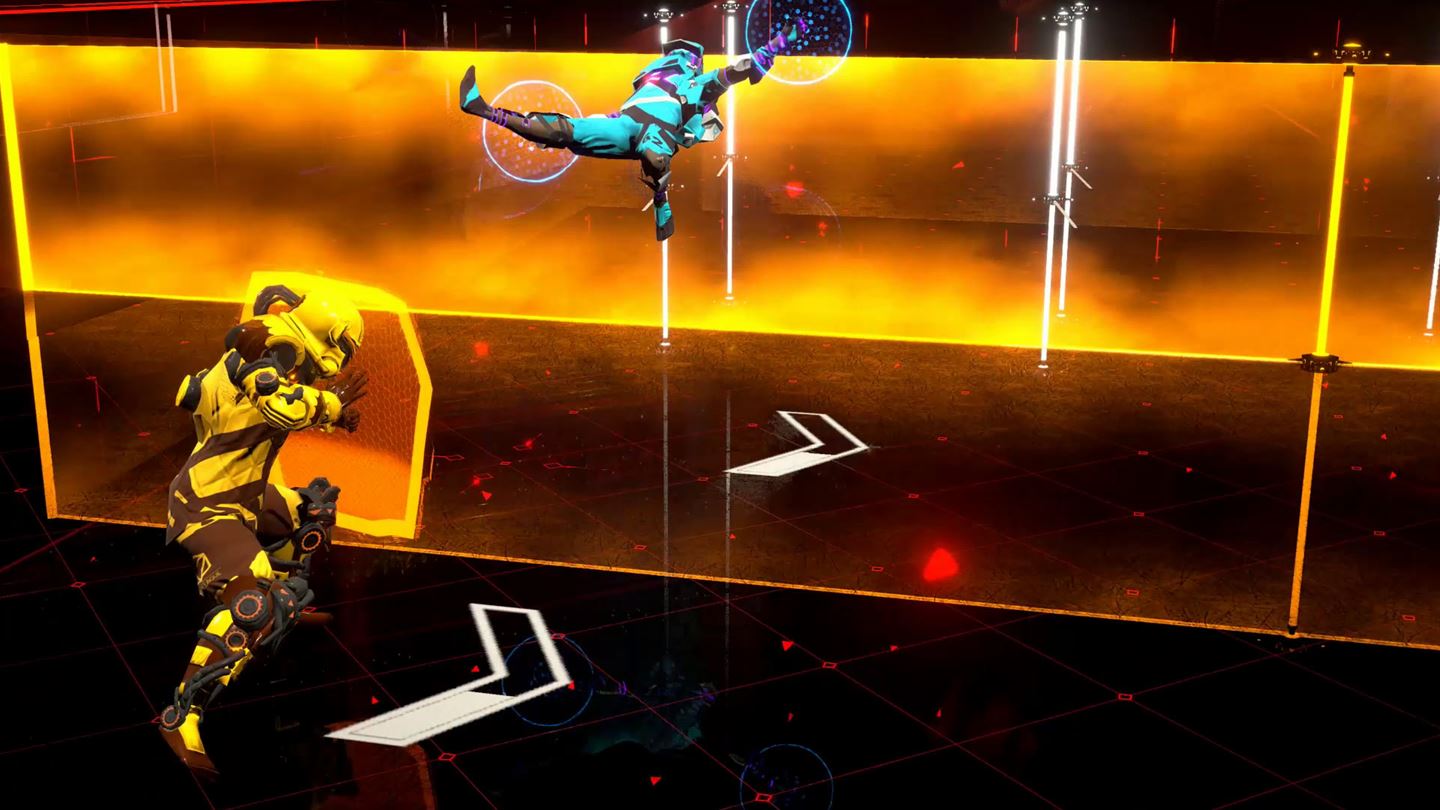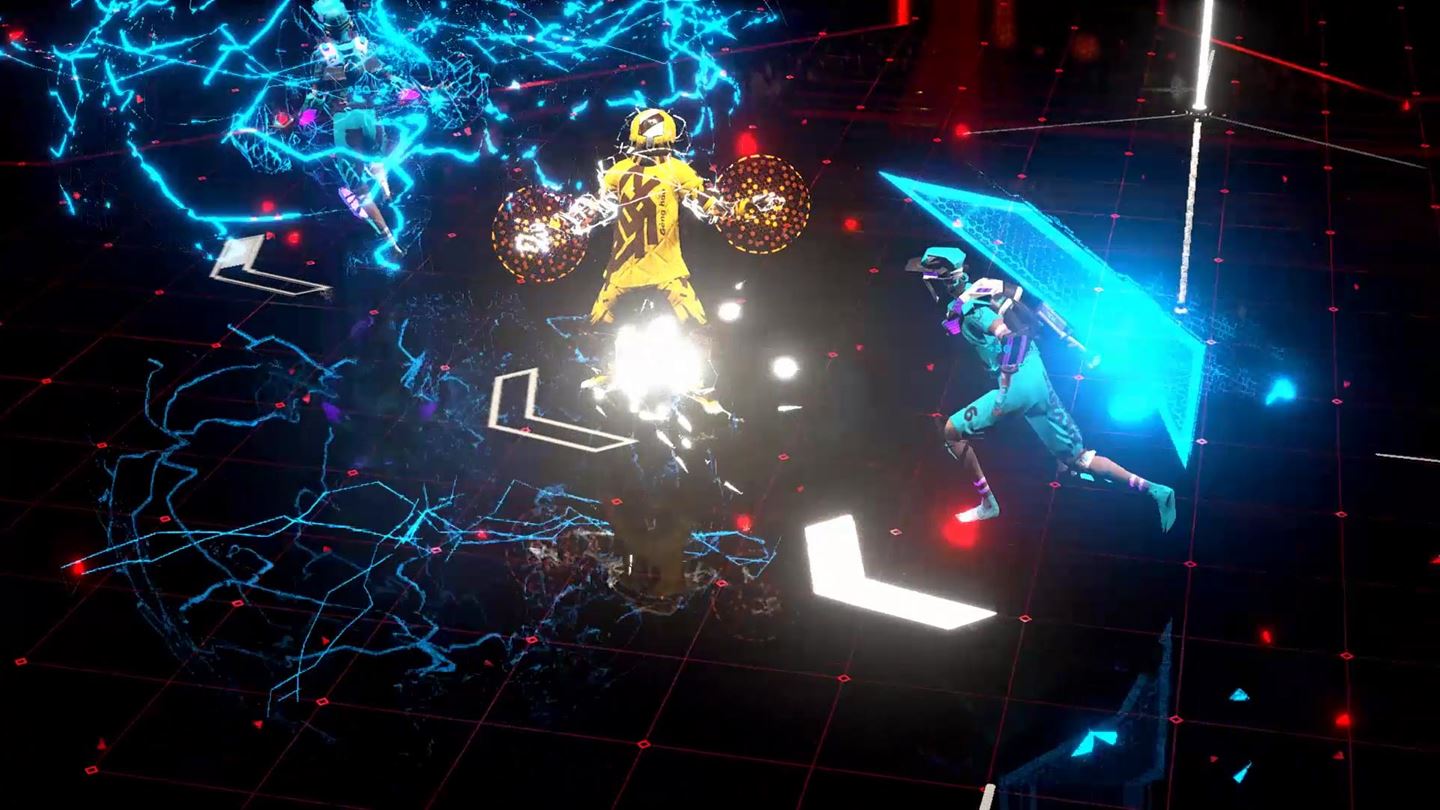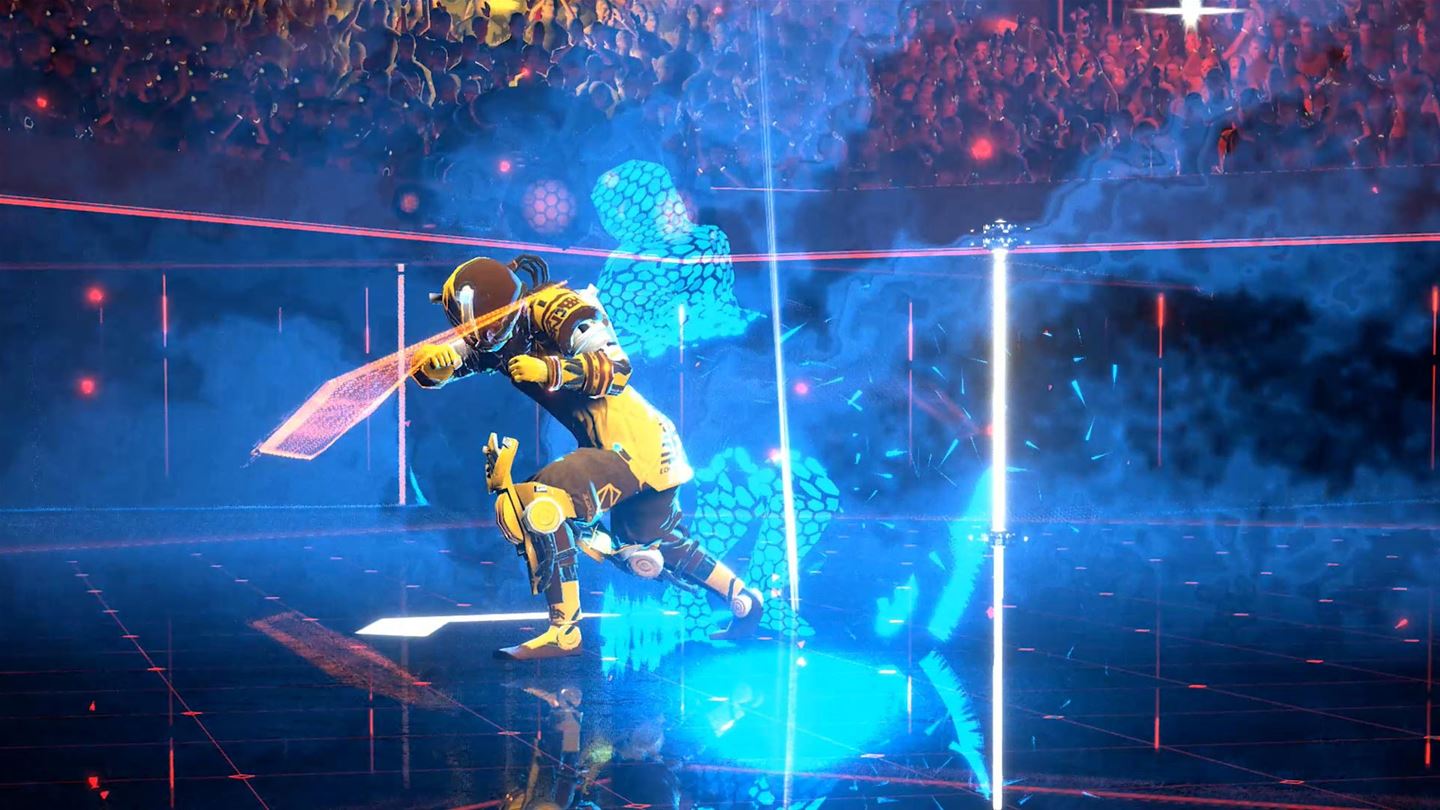If you took the aesthetic of TRON, Rocket League's sports theme, tactical decision making, and blended it all together, you'd get something similar to 505 Games' Laser League. In truth, though, it's a unique experience at its core. If you're a fan of intense, fast paced action and class-based tactics, then Laser League is definitely for you — provided you can look past a number of caveats.
Gameplay: A laser-filled match of chess

In Laser League, two teams enter an arena and try to capture laser emitters found so they'll project a laser wall of their team's color. Any enemy that touches this wall is killed, and if everyone on a team is dead at once, that team will lose the round. However, players can be revived by allied teammates, and team-colored laser walls will eventually turn neutral, giving the other team a chance to gain control. Matches are comprised of three games, and games are three-to-five rounds. The first team to win three rounds wins a game, and the first team to win two of three games wins the match. These are the basics of Laser League.
However, players will quickly learn that there's more to the game. For example, power-ups appear at intervals. One type is Switch, which will turn all enemy laser walls into your own, and vice versa. Another is Divide, which will break up all lasers on the map into fragments. In addition to these, the class the player chooses also has a huge impact as well. There are five classes to choose from, and each one has strengths and weaknesses. The Blade class is capable of using a slash that outright kills players, but the ability takes a long time to charge and Blade players are vulnerable during this time. The Thief class is capable of stealing enemy laser walls and making them friendly, but only if this power is used near the source of the wall. This means that Thief players are forced to stay near where laser walls are coming from.

Fully understanding the capabilities of each class and how they can be used effectively with teammates and the environment against enemy players is critical. The title sports an in-game voice chat system, so it's generally a good idea to try and communicate with allies. By doing this, you have the ability to set up high-level plays. One such play would be a Smash player (a character that can bash people in a direction) pushing a foe into the path of an allied Blade's slash attack.
The biggest problem with Laser League is that the amount of lasers othe n screen can get ridiculous during long rounds. While I understand why this is (it's supposed to force the round to end faster) the visual clutter simply becomes too much to process, especially if you're playing in splitscreen with a friend. Another issue is the fact that many of the classes can be hard to distinguish from one another in the heat of battle. Different characters need significantly different models to make identifying who they are easy in a game like this, but that sadly isn't the case here.
Presentation: Science fiction looking the part

The vibrant colors used for the lasers and outfits of player characters look amazing against the sleek black background of the in-game arena, which creates a very high-tech look that suits Laser League's futuristic theme perfectly. In addition to this, the musical score is also phenomenal, delivering a decent selection of thrilling tracks that ooze with intense techno beats. Overall, the title ticks all the right boxes with its atmosphere and aesthetic.
Laser League Xbox One conclusion
Despite some visual issues during gameplay, Laser league is nevertheless one of the most intense competitive multiplayer games Xbox has seen in quite a while.
Pros:
- Superb gameplay experience.
- Excellent music and art.
- Incredibly simple control scheme.
Cons:
- Impossible to keep track of all the lasers late in the rounds.
- Classes look too similar.
Laser League is available now on Xbox One for $14.99.
This review was conducted on an Xbox One, using a copy provided by the publisher.
Brendan Lowry is a Windows Central writer and Oakland University graduate with a burning passion for video games, of which he's been an avid fan since childhood. He's been writing for Team WC since the summer of 2017, and you'll find him doing news, editorials, reviews, and general coverage on everything gaming, Xbox, and Windows PC. His favorite game of all time is probably NieR: Automata, though Elden Ring, Fallout: New Vegas, and Team Fortress 2 are in the running, too. When he's not writing or gaming, there's a good chance he's either watching an interesting new movie or TV show or actually going outside for once. Follow him on X (Twitter).


